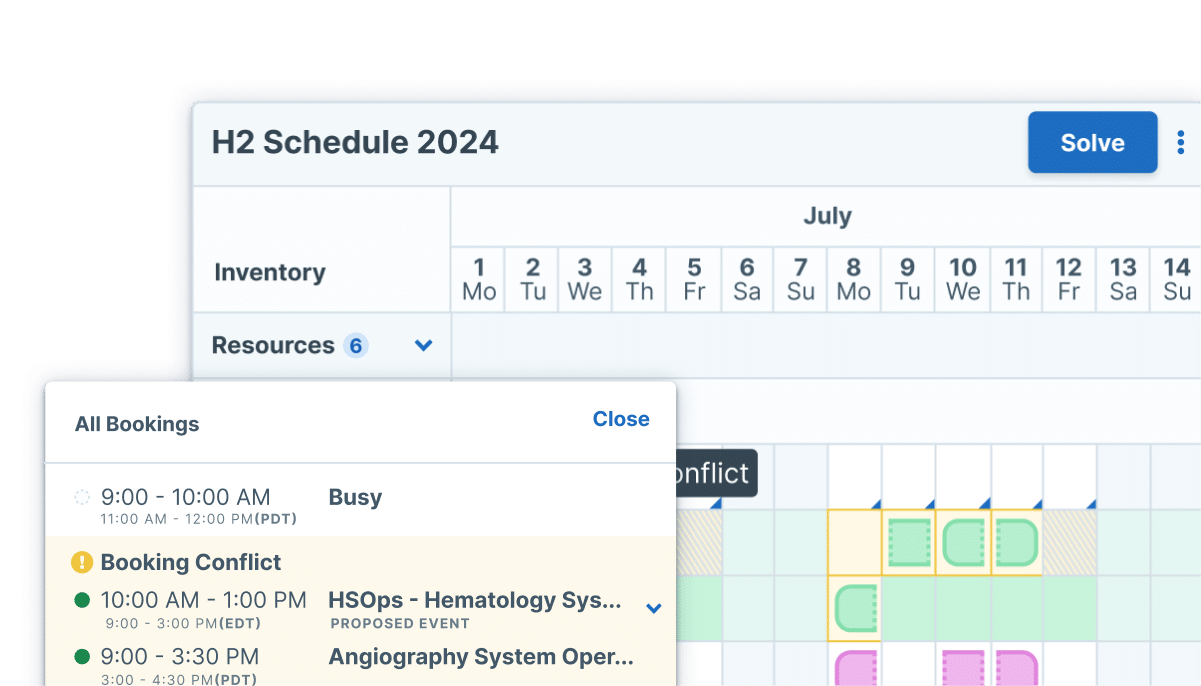Effective customer training is vital, and for many companies, it is table stakes.
While employee training focuses on internal workforce development, customer training aims to help external users maximize the value of products or services. Instructor-led Training (ILT) remains one of the most effective ways to teach people—person-to-person interaction is still difficult to replace with self-paced learning in complex, nuanced scenarios.
This is because ILT shines in scenarios where customers need hands-on guidance and interactive learning experiences. The presence of an instructor allows for immediate clarification of complex concepts and real-time problem-solving. Medical device training, for example, often requires direct observation and feedback that only an instructor can provide. This human element becomes crucial when customers must master sophisticated techniques or understand intricate product features.
The success of ILT for customer training stems from its ability to create engaging, dynamic learning environments on the fly. Instructors can adjust pace and style based on the group’s needs, ensuring all participants grasp essential concepts. This flexibility is particularly valuable when training customers from diverse professional backgrounds or varying levels of technical expertise.
Customer training vs. Instructor-led Training.
Customer training and Instructor-led Training work well together.

What is customer training?
Let’s start at the very beginning: what is customer training? Customer training helps customers effectively use a company’s products or services. Good customer training lets your customers use 100% of your product or service. The business results are tangible: quicker adoption means quick upgrades or expansions. If your customer is getting better results they are obviously happier and that translates to powerful word of mouth recommendations for your brand.
In highly regulated industries like aviation and medical technology, customer training isn’t about product adoption, but about making sure customers are properly trained on using, repairing, or even selling the product. No one is likely to recommend a new jet engine to their peers, but aviation mechanics need to prove they can diagnose and repair a new engine. It’s up to the engine manufacturer to train them.
The scope of customer training varies widely depending on the product or service complexity. Some programs might focus on basic software navigation, while others could involve extensive technical training for complex medical devices or industrial equipment. Regardless of the content, successful customer training programs share common elements: clear learning objectives, relevant practical exercises, and measurable outcomes.
What is Instructor-led Training?
Instructor-led Training refers to any learning experience where a knowledgeable instructor guides participants through educational content in real-time. This traditional training method has evolved to include both in-person classroom settings and virtual environments through video conferencing platforms. In-person or virtual—the strength of ILT is the person to person connection that happens in real time.
Modern ILT programs leverage various teaching techniques to engage participants effectively. Instructors might combine lectures with hands-on exercises, group discussions, and real-world problem-solving activities. This multi-modal approach helps ensure learning retention and practical application of new skills. The immediate feedback loop created in ILT sessions allows participants to correct misunderstandings quickly and build confidence in their abilities.
The role of an instructor extends beyond merely presenting information. They serve as facilitators, mentors, and subject matter experts who can adapt the learning experience to meet specific customer needs. This human element proves particularly valuable when dealing with complex products or services that require nuanced understanding and careful implementation.
Do companies still use Instructor-led Training?
Instructor-led Training remains the most effective method for some types of training.

Yes—Instructor-led Training is still popular. In the past decade, self-paced learning has become very popular for certain types of training, but ILT remains the dominant method in industries where training absolutely has to have a measurable impact. But it is easy to scale self-paced eLearning, and that is a huge cost savings for large organizations. ILT is much more expensive to plan and manage, so it is used selectively.
Companies often require instructor-led customer training for several compelling reasons. Complex products or services may demand detailed explanation and demonstration that self-paced materials cannot adequately provide. High-stakes implementations, such as medical devices or industrial equipment, require careful oversight to ensure proper usage and safety compliance. Additionally, some industries maintain regulatory requirements that mandate certified instructor presence during training sessions.
The content for customer training programs typically comes from multiple sources within an organization. Product development teams provide technical specifications and functionality details. Customer success teams contribute common use cases and problem-solving scenarios. Technical writers and instructional designers transform this raw information into structured learning materials. Subject matter experts often review and validate content to ensure accuracy and completeness.
ILT and Virtual Instructor-led Training (VILT) offer several advantages over self-paced learning for customer education:
- Direct interaction allows immediate clarification of complex concepts
- Real-time feedback helps prevent misunderstandings and incorrect habit formation
- Group discussions facilitate peer learning and networking opportunities
- Instructors can adjust content delivery based on participant needs
- Hands-on exercises receive expert supervision and guidance
These benefits become particularly important when training customers on mission-critical systems or sophisticated technologies. The presence of an instructor ensures proper skill development and helps identify potential implementation challenges early in the learning process.
Advantages of customer training
Effective customer training delivers numerous benefits for both the providing organization and its customers. Well-trained customers typically experience higher satisfaction levels and achieve better outcomes with their purchased solutions. This satisfaction often leads to increased customer retention and reduced support costs.
Organizations that invest in customer training programs often see improved product adoption rates. Customers who understand how to use products effectively are more likely to integrate them fully into their operations. This deeper integration creates stronger partnerships and increases the likelihood of future purchases or renewals.
Training programs also serve as valuable feedback channels for product development teams. During training sessions, instructors gather insights about customer needs, common challenges, and potential product improvements. This information helps companies refine their offerings and better serve their market.
Advantages of ILT
Instructor-led Training offers unique benefits that make it particularly effective for customer education. The immediate interaction between instructor and learners creates a dynamic learning environment where questions receive instant answers. This real-time feedback loop helps prevent misunderstandings and ensures proper skill development.
ILT provides opportunities for customization that pre-recorded materials cannot match. Skilled instructors can adjust their teaching approach based on participant needs, spending more time on challenging concepts or providing additional examples when necessary. This flexibility helps ensure all learners achieve the desired learning outcomes.
The social aspects of ILT contribute significantly to its effectiveness. Group discussions allow participants to learn from each other’s experiences and build professional networks. These connections often extend beyond the training session, creating valuable peer support systems for ongoing learning and problem-solving.
These advantages come at a cost. Instructor-led Training requires a lot of effort to plan, schedule, and deliver. Now, a training team has to coordinate and schedule instructors, each with different credentials and experience, facilities, equipment (sometimes very expensive, and hard-to-book), and learners. In addition to tracking attendance, engagement, and the other standard metrics now you have to solve transportation, equipment, and maybe even lunch.
How to improve your ILT program.
Best practices, tips and tricks for managing an ILT program at scale.

ILT best practices for customer training programs
Successful instructor-led customer training programs follow established best practices for both online and offline delivery:
Online Best Practices:
- Use interactive tools to maintain engagement
- Incorporate regular breaks to prevent screen fatigue
- Provide clear technical requirements before sessions
- Test all technology components in advance
- Record sessions for future reference
- Use breakout rooms for small group activities
Offline Best Practices:
- Create comfortable learning environments
- Plan hands-on activities throughout sessions
- Provide comprehensive training materials
- Include networking opportunities
- Ensure proper equipment availability
- Maintain appropriate instructor-to-student ratios
Implementing these best practices helps ensure consistent, high-quality training experiences across all delivery methods. Regular evaluation and adjustment of these practices based on participant feedback helps maintain program effectiveness.
ROI on customer training
Calculating the Return on Investment (ROI) for customer training presents unique challenges due to the indirect nature of many benefits. However, several key metrics can help demonstrate program value:
Essential Metrics:
- Customer satisfaction scores
- Product adoption rates
- Support ticket reduction
- Customer retention rates
- Upsell/cross-sell success rates
- Time to customer proficiency
- Training completion rates
Customer training programs often serve as powerful sales tools by demonstrating a commitment to customer success. Potential customers frequently view robust training programs as value-added services that differentiate offerings from competitors.
Administrate helps teams turn ILT into a lucrative, reliable revenue stream.
- Booking and storefront (Weblink): Streamline enrollment and payment processing.
- Training subscriptions: Flexible access to multiple training sessions.
- Training credits: Simplified training credit management.
Reporting and data analytics lets you make better decisions for your team. To get there, you will need to ask and answer a lot of questions. Here are some common questions leadership will pose about customer training:
- How does training impact customer retention rates?
- What is the correlation between training completion and support costs?
- Can you demonstrate improved product adoption among trained customers?
- How does our training ROI compare to industry benchmarks?
- What percentage of customers complete available training?
Managing customer training with a Training Management System
A training management system (TMS) like Administrate streamlines ILT operations. The TMS centralizes all training-related activities, from scheduling to reporting, creating a more efficient and scalable program management process. For customer training programs that rely on a large volume of Instructor-led Training, this saves hundreds of hours but more critically, eliminates errors, mistakes, and oversights that can happen when managing complex schedules.
Administrate’s comprehensive solution supports the entire training lifecycle:
- Planning: Create and manage course catalogs, schedule sessions, and allocate resources
- Scheduling: Coordinate instructor availability, facility usage, and equipment needs
- Communication: Automate student notifications, reminders, and follow-ups
- Issue Resolution: Track completion rates, certifications, and compliance requirements
- Reporting: Generate detailed analytics on program performance and student progress
These capabilities enable training managers to focus on content quality and program improvement rather than administrative tasks.
Example: medical device customer training program
Consider managing a complex customer training program for orthopedic surgeons learning to implement a new knee replacement system. This example demonstrates how Administrate supports sophisticated training requirements:
Initial Setup:
- Create a comprehensive course catalog in Administrate detailing all training components
- Configure certification requirements and testing parameters
- Set up instructor profiles with relevant credentials and availability
- Establish facility and equipment resources within the system
Program Implementation:
- Schedule management: Administrate’s calendar system coordinates instructor availability, facility bookings, and equipment allocation across all hundred training events
- Resource tracking: The system maintains detailed records of specialized equipment availability and laboratory space requirements
- Communication workflow: Automated email sequences handle pre-training preparation, during-training updates, and post-training follow-up
- Compliance Management: Built-in tools track and document all accreditation requirements
- Testing and certification: The platform manages assessment procedures and maintains certification records
The system streamlines complex logistics:
- Instructor scheduling across multiple time zones
- Equipment allocation and tracking
- Facility coordination for hands-on labs
- Student enrollment and prerequisite verification
- Accreditation documentation and reporting
- Performance tracking and assessment management
This comprehensive approach ensures consistent training delivery while maintaining necessary compliance standards. The platform’s reporting capabilities provide real-time visibility into program progress and outcomes, enabling continuous improvement and optimization.
The automated workflows reduce administrative burden, allowing training managers to focus on program quality and participant success. Regular system reports help identify potential issues early, ensuring smooth program execution across all hundred training events.






